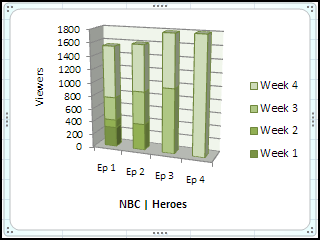Summary: An analysis of current television ratings methods, why they’re inappropriate for the timeless internet and digital video recorder era, and suggestions for improving them.
Traditional television ratings reports let TV executives and analysts study the behavior of a particular show or series, displaying the number of viewers each show had, broken down by demographic targets. This allows the television industry to determine which show won a particular time slot (e.g., Friday 9pm to 10pm), how it performed among a particular demographic (e.g., Males 18-34yrs) and how it has evolved (in the case of serials) over time (e.g., Are there more or less people watching it).
But what happens when viewers can watch any show at any time? When viewers don’t have to choose one show over another on a rival network? What happens when you can’t tell for sure who your viewers are?
The internet and TiVos give the viewer unprecedented freedom over when, where and what to watch. Soon it won’t be possible to tell for sure how many people are watching any given show, using traditional ratings tools such as AGB/Nielsen’s Peoplemeters. Programming executives won’t have to worry about what the rival networks are showing at the same time as their new hit show. And ratings analysts won’t be able to track a new series’ behavior by simply looking at how each episode did on its air date.
Two hit shows going head-to-head on rival networks? Not a problem: watch one and record the other for later viewing (or get it from the Net). Missed last week’s premiere episode? No problem there either: watch it online, download it off bit torrent or pay for it on iTunes. Some of this you can easily track, but some you can’t.
Analysts will need to track each episode over time and then track the series as a whole. A VERY SIMPLIFIED graphic might look something like this, with a running total for each episode over the time of the series:

Any viewer can watch any episode from its air date to the end of the series (and beyond). This allows viewers to catch-up after the series has started or to catch any episode they may have missed. Of course, the whole concept of missing an episode disappears in the TiVo/Internet model. But in addition to tracking how many times a particular episode was watched or downloaded, you should also be tracking what’s happening with the rest of the show’s internet presence. Are viewers reading the characters’ blogs? Are they discussing the show in the forums? Are they setting up fan websites? Linking to the Myspace profiles? Uploading mashups of show clips? Not only must you track the show’s behavior over time and over several distribution methods, but you must also track and measure the user experience surrounding the show.
And finally, how do you solve the demographic problem: if you don’t know who your viewers are, how do you target them? The answer is both simple and complex. I believe that traditional demographic targets are on the way out. Social networks and special interest groups are the new targets… and these are much easier to track via the Internet than the old ones. You may not be able to tell whether a particular viewer is male or female, young or old, wealthy or not, but you can tell what news s/he reads, what games s/he plays and which people s/he hangs out with (to a certain degree, of course). One minor detail… you can’t (or shouldn’t) add apples and oranges. Traditional television ratings data categorizes viewers by demographic targets such as age, sex, location and income (because someone takes the time to visit each household in the sample and verify this information). And whereas traditional ratings analysis has always relied on a sample set of data subjects, internet traffic and behavior analysis has always examined the whole dataset. Eventually it shouldn’t be too hard to homogenize both sets of data, either by linking traditional television viewers to their online behaviors, or simply by expanding their interviews to include enough data to categorize them.
Currently, Google and YouTube limit their video data to a traditional web-traffic analysis mindset: most viewed, most recent, most subscribed. Coming from an Internet world, they fail to see the need (or maybe even the possibility) of better, more detailed reports (Yes, it could also be that they keep these reports hidden from the outside world).
As for me, I’d love to know how the most watched videos on YouTube evolved over time. Have they peaked? Are they growing? Who watches them? How about a Google Finance like chart, linking views to blog/news mentions? Which video has been linked-to the most (this one is actually on YouTube)? Which videos have been dugg and how many diggs did they get? Actually… I’d just love to work there and get it done myself!
Let's Connect
If you want to hire me or get in touch about something or just to say hi, reach out on social media or send me an email.
Other blogs
Some other blogs where I've posted throughout the years. Most of these will eventually migrate here.